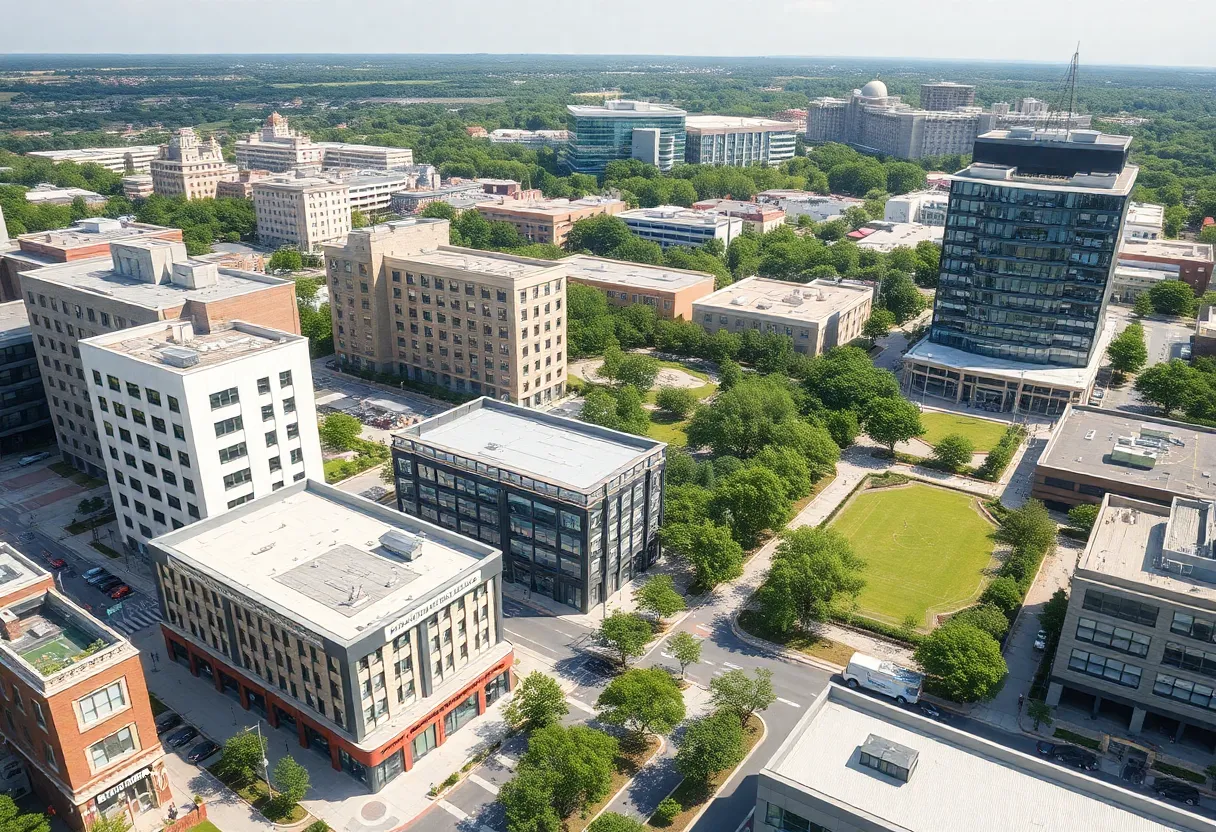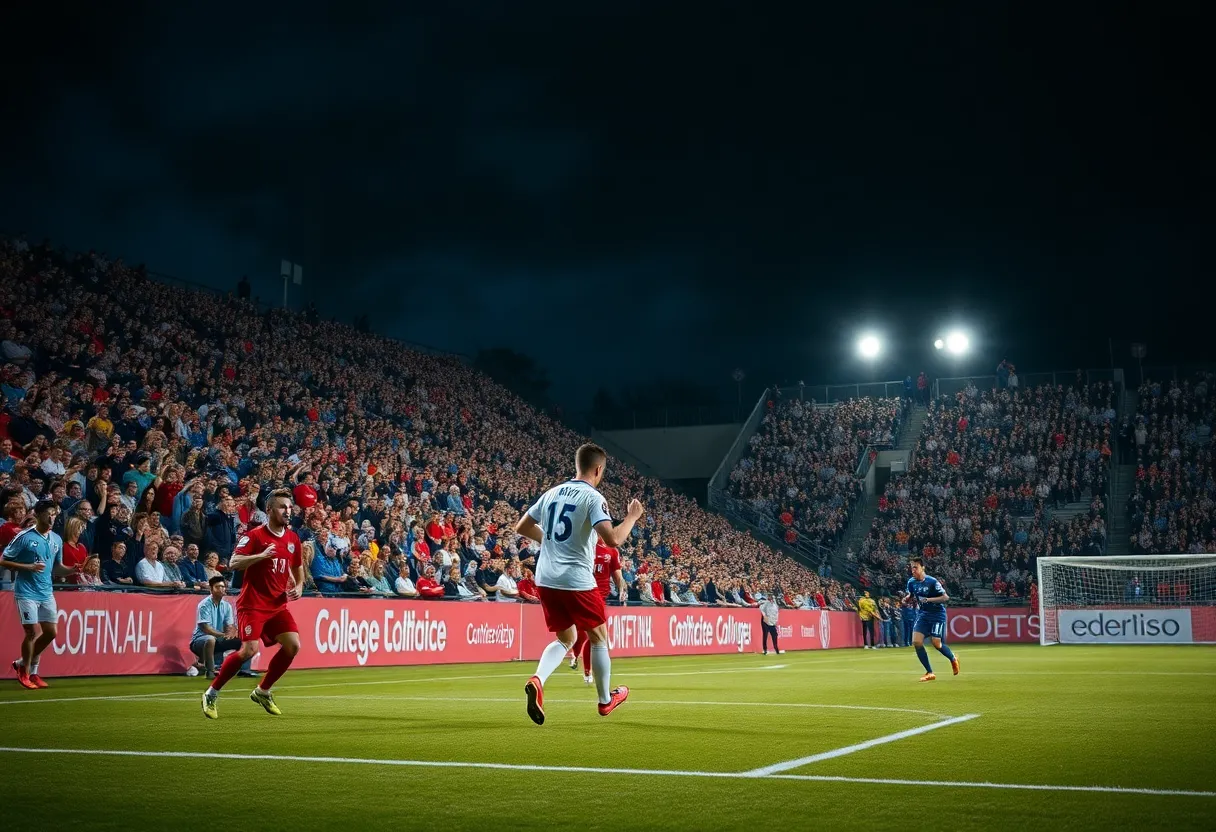Tucson, October 21, 2025
Tucson is witnessing a significant development boom, largely influenced by growth from northern Arizona. New commercial projects aim to create approximately 1,000 jobs near the University of Arizona, offering a mix of retail and office spaces. While this progress could boost the local economy, concerns about increased traffic and infrastructure strain have emerged. Developers are prioritizing sustainable practices in these projects, aiming for a balance between economic prosperity and community impact.
Tucson, Arizona’s Development Boom Extends from Northern Arizona with New Commercial Projects
Tucson is emerging as a key player in Arizona’s expanding development landscape, fueled by growth originating in northern parts of the state. Recent commercial projects in the city promise to create around 1,000 new jobs through mixed-use developments near the University of Arizona (UA). These initiatives blend retail spaces, office buildings, and other facilities, aiming to boost the local economy while addressing urban needs.
The surge in construction activity reflects a broader wave of investment spilling from northern Arizona into southern regions like Tucson. Developers are focusing on areas adjacent to UA, where high foot traffic and proximity to educational resources make the locations ideal for commercial ventures. This expansion is expected to invigorate the job market by providing opportunities in retail, office administration, and support services.
However, the rapid pace of development has raised concerns among residents and local officials about increased traffic congestion. As more commercial spaces come online, streets near project sites could see heavier vehicle use, potentially straining Tucson’s existing infrastructure. City planners are actively monitoring these issues to ensure that growth does not overwhelm transportation networks.
Investment from Major Firms Driving the Projects
Firms such as Vestar are at the forefront, committing significant resources to these mixed-use developments. Vestar’s investments target creating vibrant hubs that combine shopping, professional workspaces, and community areas. These projects are designed to attract businesses and residents alike, fostering a seamless integration of work and leisure.
The developments feature modern layouts that prioritize accessibility, with wide sidewalks, ample parking, and connections to public transit. Near UA, this means easier access for students, faculty, and visitors, potentially enhancing the university’s role in the local economy. Overall, the initiatives represent a strategic push to capitalize on Tucson’s growing population and its appeal as a business-friendly city.
Sustainable Designs Align with Local Environmental Goals
To mitigate environmental impacts, city planners are enforcing sustainable practices in the new constructions. Developments must incorporate features like solar panels to generate renewable energy, reducing reliance on traditional power sources. Other green elements include energy-efficient materials, water conservation systems, and green spaces to promote biodiversity.
These measures align with Tucson’s eco-friendly ethos, which emphasizes responsible growth amid the desert climate. By integrating sustainability from the outset, the projects aim to lower long-term operational costs and appeal to environmentally conscious tenants and buyers. Planners view this as essential for maintaining the city’s reputation as a forward-thinking urban center.
Balancing Economic Gains with Community Concerns
While the economic vitality spurred by these projects is a major draw, addressing traffic concerns remains a priority. Officials are exploring options like improved road widening, signal optimizations, and incentives for carpooling or biking. Community input has shaped planning processes, ensuring that resident feedback influences final designs.
The job creation aspect is particularly promising for Tucson’s workforce. With 1,000 jobs on the horizon, opportunities will span entry-level positions to skilled roles, helping to diversify the employment base. This influx supports broader economic stability, especially as remote work trends evolve and demand flexible office spaces.
Background on Arizona’s Regional Development Trends
Arizona’s development momentum has been building in the north, where natural beauty and outdoor recreation draw investors. Cities like Flagstaff and Sedona have seen a rise in commercial and residential builds, driven by tourism and tech sectors. This northern surge is now extending southward, reaching Tucson as developers seek untapped markets.
In Tucson, the proximity to UA provides a unique advantage, blending academic innovation with commercial enterprise. The university’s research ecosystem attracts startups and established firms, amplifying the impact of new developments. Historically, Tucson’s economy has relied on education, aerospace, and tourism; these projects build on that foundation while adapting to modern needs.
Statewide, Arizona’s growth is supported by favorable business climates, including tax incentives and infrastructure investments. However, southern areas like Tucson must navigate unique challenges, such as water scarcity and heat, which influence sustainable design choices. The current wave of projects marks a pivotal moment, positioning Tucson for sustained prosperity.
As construction progresses, ongoing evaluations will track job creation, traffic patterns, and environmental outcomes. This data will guide future developments, ensuring they contribute positively to Tucson’s evolving landscape. The blend of economic opportunity and careful planning underscores the city’s commitment to balanced growth.
FAQ
What is driving the development surge in Tucson?
Northern Arizona’s development surge is spilling into Tucson with new commercial projects. Firms like Vestar are investing in mixed-use spaces near UA, blending retail and offices.
How many jobs are expected from these new projects?
This growth promises 1,000 jobs.
What concerns are associated with the development?
This growth promises 1,000 jobs but sparks traffic concerns.
How is the city addressing sustainability in these projects?
City planners promote sustainable designs, including solar panels, to align with Tucson’s eco-friendly ethos while spurring economic vitality.
What is the overall impact on Tucson’s economy?
City planners promote sustainable designs, including solar panels, to align with Tucson’s eco-friendly ethos while spurring economic vitality.
Key Features of Tucson’s Development Projects
| Feature | Description |
|---|---|
| Location | Near University of Arizona (UA) |
| Type | Mixed-use spaces blending retail and offices |
| Job Creation | 1,000 jobs promised |
| Key Investor | Firms like Vestar |
| Sustainability | Includes solar panels and eco-friendly designs |
| Concerns | Traffic issues |
| Overall Goal | Spur economic vitality aligned with Tucson’s ethos |
Deeper Dive: News & Info About This Topic
HERE Resources
Mattamy Homes Recognized as Top Workplace for Fifth Year
The New Corporate Rat Race in Tucson: Who Can Look the Busiest
Arizona Governor Allocates $13 Million for Housing Stability
University of Arizona Rejects Trump’s Higher Education Compact
University of Arizona Reinforces Commitment to Academic Freedom
Tucson Moving Company Streamlines Relocations Amid Desert Challenges
Tucson Family-Owned Businesses Recognized as Top Employers
Tucson Schools Craft AI Policies as Classroom Use Expands
Tucson Unified School District Fights for Proposition 414 Support
Tucson Announces Infrastructure Upgrades to Address Roads and Transit




